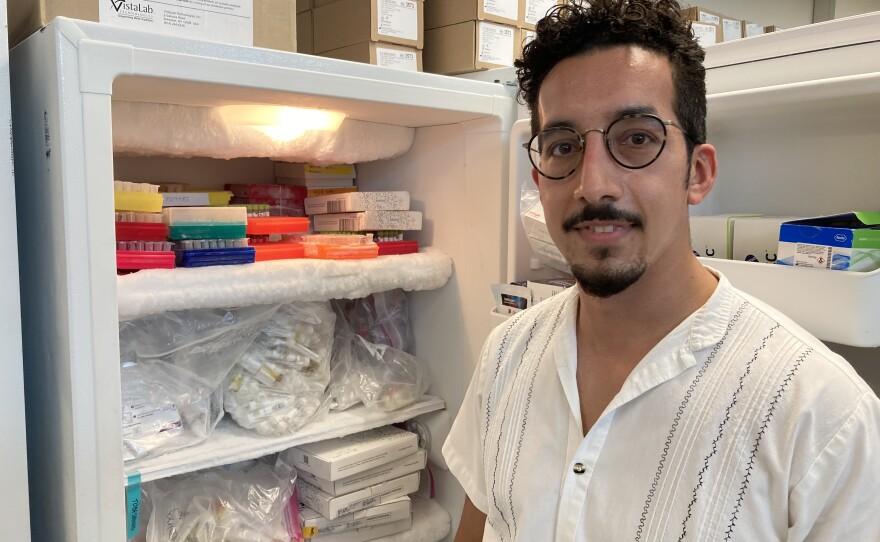Your home has many creatures living in it who are paying no rent, yet they are reproducing, consuming and emitting a vast array of stuff.
Researchers at UC San Diego are trying to learn who your microscopic roommates are, and they’ve released a study of their initial findings.
The study, published in Science Advances, came from an analysis of test samples from a house where volunteers lived for 26 days, participating in predetermined activities. Before they moved in, the house got a good scrubbing with bleach to try to eliminate the previous microbiome.
Bioengineering Ph.D. student Rodolfo Salida stood in front of a freezer in a UC San Diego lab that’s filled with packages of cotton swabs they used to wipe counters, floors and sinks in the house to capture the resident microbes.
“Those were the actual sampling devices that we used to gather samples of the surface microbiomes of the house,” said Salida, who was a study co-author. “The data collection was as simple as that. I believe the hardship came from tracking the identity of each sample and then generating the data that is used in the analysis.”
Two microbial “hot spots” were the kitchen and the bathroom. In the kitchen, they found bacteria commonly found around food preparation. In the bathroom? You can imagine.
Microbes enter the home through breezes or are tracked in on the soles of your shoes. They come in with the products you buy such as coffee. In fact, one of the most interesting findings was the discovery of paenibacillus. It was colonizing a part of the kitchen in the place where coffee was made.
“The coffee itself probably doesn’t have paenibacillus in it, but the residue that is left behind is a great growth medium for paenibacillus,” said Pieter Dorrestein, a study co-author who’s with UC San Diego's Skaggs School of Pharmacy.
Paenibacillus may have positive health effects, since it’s used as a probiotic for several animal species. One finding that raised some concern was the use of medications that included antidepressants and anabolic steroids. Molecules derived from those drugs were found pretty much everywhere.
“If you consume medications internally, you would not be expecting those to be all over the house,” Dorrestein said. “The other thing we noticed was that bacteria were digesting molecules that were present in specific locations and to me that was another surprising finding.”
Identifying microbes through DNA sequencing is difficult and expensive. The same is true of trying to understand the consequences of bacteria consuming wayward drug molecules. Fully understanding the microbiome of an ordinary home will require a lot more discovery.

Rob Knight, director of UC San Diego’s Center for Microbiome Innovation, said further studies could explain many human health conditions and disparities.
“For example, what’s the influence of everything from exposure to pets and livestock, which we know can have an influence on asthma,” Knight said. “Looking at how particular behaviors influence the environment we live in. All of that will happen as the technology becomes cheaper and easier to use.”
Researchers say their findings could ultimately influence the design of homes to make them more likely to create an interior microbiome that is healthier for humans.






